Crime
Robert ‘Bobby’ Gentile, Long Fingered by the FBI as a Suspect in the 1990 Isabella Stewart Gardner Museum Heist, Dies at 85
"His passing might make people less inhibited about talking," says the museum's chief investigator.
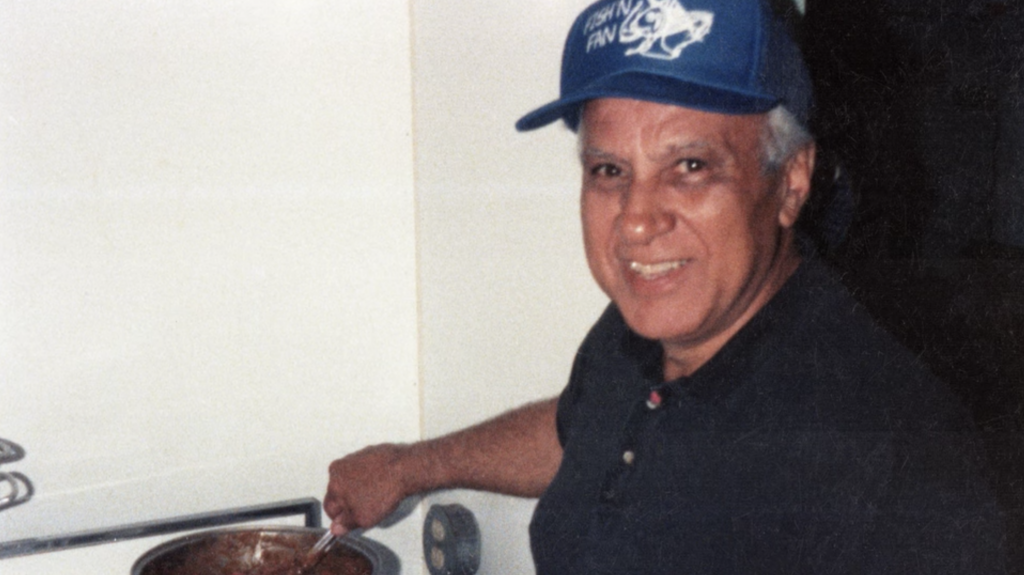
"His passing might make people less inhibited about talking," says the museum's chief investigator.

Sarah Cascone

Robert “Bobby” Gentile, one of the last surviving named suspects in the infamous heist of 13 artworks valued at $500 million from Boston’s Isabella Stewart Gardner Museum, died on Friday. He was 85 years old and had suffered a stroke, according to his lawyer, A. Ryan McGuigan.
“He denied having the paintings till his death,” McGuigan told the Boston Globe. “They say he was a bad guy, but he became a friend. He was the last of his kind.”
The Gardner robbery took place in the early morning hours following Boston’s spirited St. Patrick’s Day celebrations in 1990. Two men dressed as police officers gained access to the museum thanks to a night security guard, tied up the two watchmen on duty, and spent the next two hours stealing masterpieces by artists including Rembrandt van Rijn, Johannes Vermeer, Edgar Degas, and Édouard Manet.
The works have been missing ever since, despite the offer of a $10 million reward.
“We’ve always believed that Robert Gentile had some information that could have helped us, but chose not to reveal it,” Gardner security director and chief investigator Anthony Amore told Artnet News, adding that he extends his sympathies to Gentile’s family. “We believe that he had contact with at least two of the works.”
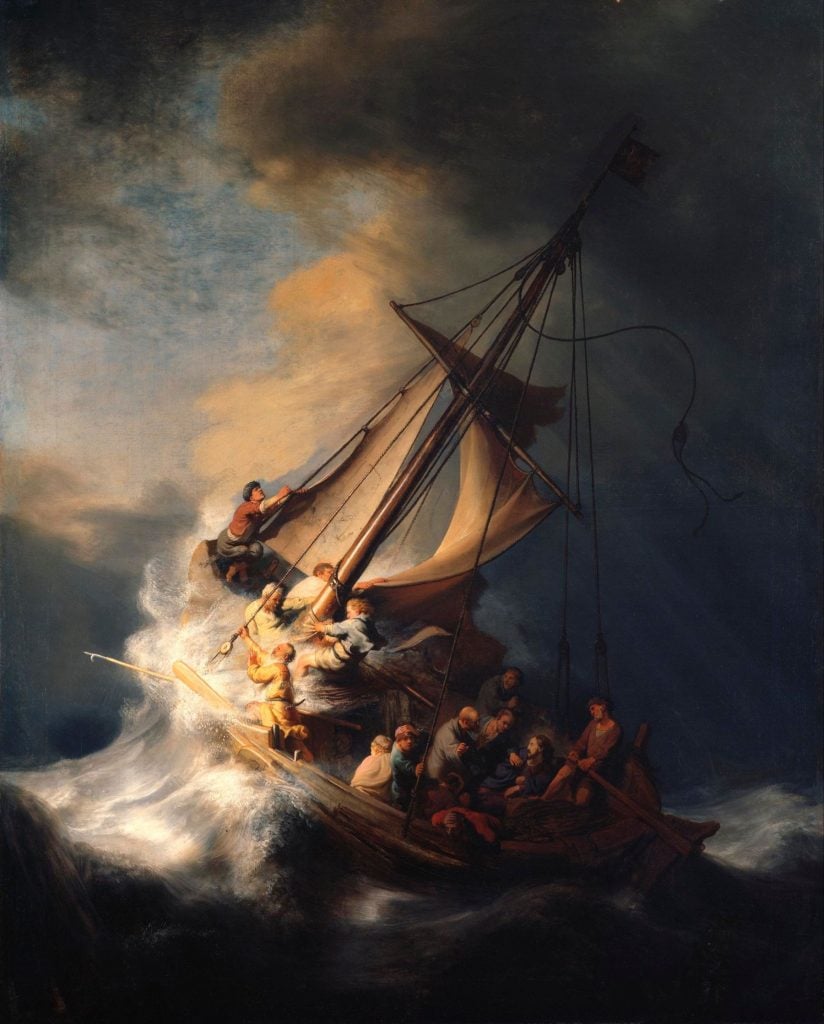
Rembrandt van Rijn, Christ in the Storm on the Sea of Galilee (1633). The Dutch artist’s only seascape was stolen in the Isabella Stewart Gardner Museum heist in 1990 and has not been seen since. Collection of the Isabella Stewart Gardner Museum, Boston.
A Connecticut gangster and suspected mafia member with an extensive criminal record, Gentile became a person of interest in the Gardner case in 2009. He was fingered by Elene Guarente, the widow of Robert “Bobby” Guarente, who had close ties to several of the Boston criminals believed to have orchestrated and carried out the robbery.
The FBI were searching the Guarente family farmhouse in Maine in connection with a drug investigation. That was a dead end, but when investigators returned the keys to Elene, she volunteered that after Guarente got out of prison in 2002, he had handed two of the stolen Gardner works over to Gentile during a lunch with their wives in Portland, Maine. (Guarente died of cancer in 2004, and Elene died in 2018.)
Initially, Gentile agreed to work with the FBI, but his cooperation agreement was torn up after he was caught lying—polygraph results found that there was a less than 0.1 percent chance he was telling truth about what he knew. The FBI suspects the stolen paintings eventually passed to the Philadelphia mob.
In the recent Netflix documentary series This Is a Robbery: The World’s Biggest Art Heist, McGuigan recalled Gentile’s outlandish claim during the polygraph that Elene once showed him that she kept the Gardner’s tiny Rembrandt etching stored in her bra—only to admit to the attorney that he was lying as soon as officials were out of earshot.
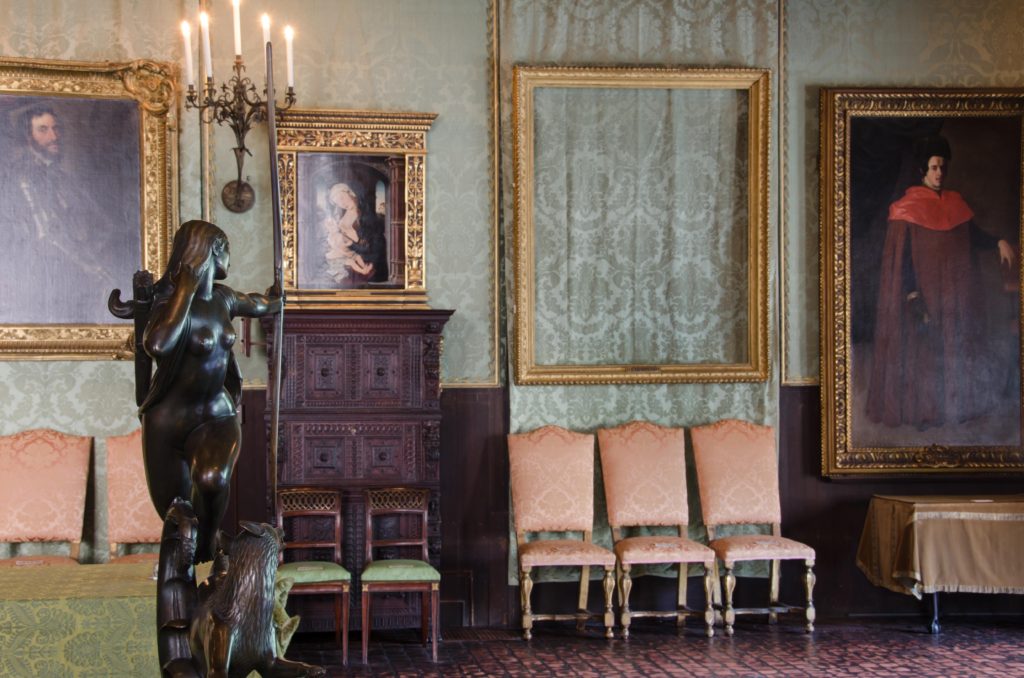
An empty frame remains where Rembrandt’s The Storm on the Sea of Galilee was once displayed before the theft at the Isabella Stewart Gardner Museum. Photo courtesy of the FBI, public domain.
“A guy like that, what are you gonna do—he’s never told the truth in his life,” reporter Edmund Mahoney of the Hartford Courant told the documentary crew.
“Elene Guarente was a very credible witness,” Amore said. “When we first interviewed him, Robert Gentile said that he had never even heard of the heist—but the evidence points to him having intimate knowledge of the works and the crime.”
In his only TV interview, given earlier this year to New Haven’s News 8, Gentile maintained his innocence, insisting “[Elene’s] crazy. She’s bipolar. She’s nuts, I know she was nuts.”
The FBI eventually sent an informant to spy on Gentile, or “the Cook,” as he liked to be called, at the red-sauce joint he ran out of his used car business in South Windsor. He was indicted for selling prescription painkillers after accepting the informant’s offer of $300 for Gentile’s personal bottle of prescription meds.
Then came the dramatic 2012 FBI raid of Gentile’s Connecticut home—the first of several over the years—an extensive search employing ground-penetrating radar.
“Word came in, we’re going to get this stuff back,” John Green, a former forensic photographer for the FBI, said in This Is a Robbery. “We prepared for a press conference, poster boards were made for all the pieces. The word ‘recovered’ was over them.”
But the search came up empty handed, save for a 1990 Boston Herald newspaper clipping about the theft and a handwritten list on yellow looseleaf of the stolen works and the street value for each piece. The FBI also found enough drugs and firearms to sentence Gentile to two-and-a-half years in prison, but he still refused to provide any information regarding the artworks’ whereabouts.
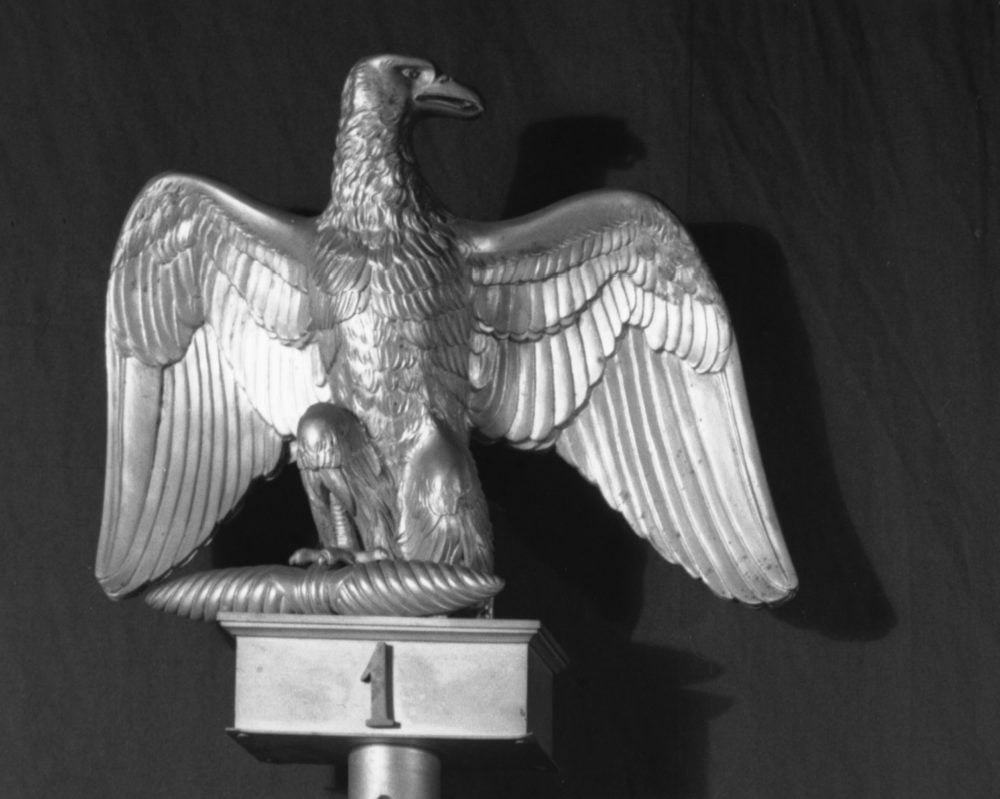
This Napoleonic bronze eagle finial was stolen from the top of a flagpole at the Isabella Stewart Gardner Museum during the 1990 heist. Photo courtesy of the Isabella Stewart Gardner Museum, Boston.
The FBI continued its efforts upon Gentile’s release in 2014, according to a detailed report from the Hartford Courant. His cousin-turned-FBI informant Sebastian “Sammy” Mozzicato told the paper he recorded Gentile agreeing to sell the paintings for $500,000 each before the mobster grew suspicious and backed out of the deal. Mozzicato also claims that Gentile kept the Gardner’s stolen Napoleonic finial, a 10-inch tall bronze eagle that formerly topped a flagpole, in his auto-body shop for years.
Gentile was arrested again in 2015 for selling a gun and ammunition to another cousin working for the FBI, and returned to prison, despite efforts to dismiss the case as entrapment. (The case was handled by federal prosecutor John Durham, who is also investigating the Steele dossier.)
In 2016, Gentile nearly died in a health scare, but continued to maintain his silence surrounding the robbery, even when his lawyer promised that useful information would secure his release.
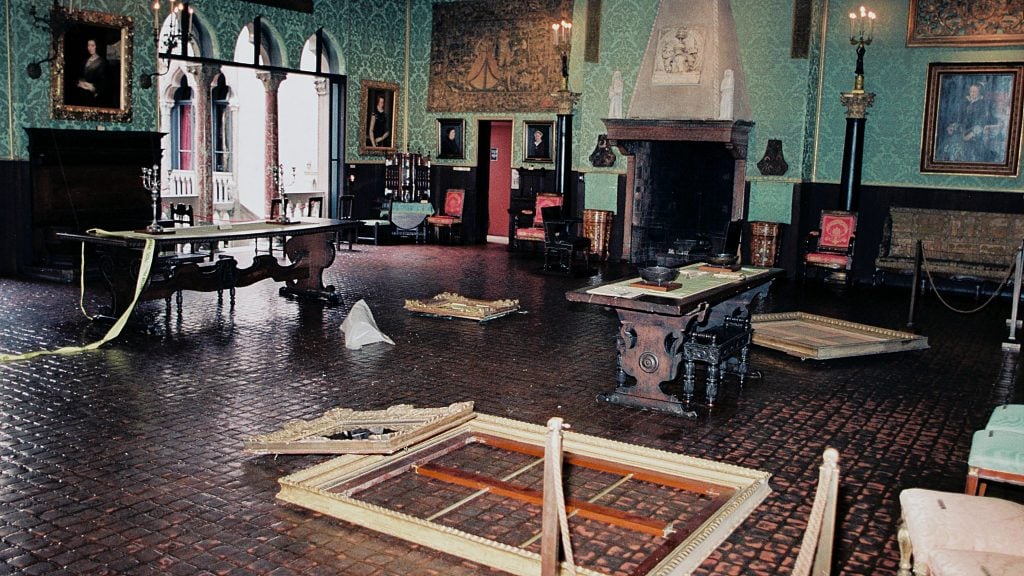
A crime scene photograph from the Isabelle Stewart Gardner heist, in This is a Robbery: The World’s Biggest Art Heist. Courtesy of Netflix ©2021.
“Real tears came down his face, because he genuinely loves his wife, and he looked at me, defeated, and he said, ‘But there ain’t no paintings,'” McGuigan said in the documentary. “It was at that point I knew that I would never ask him about paintings again.”
“I had nothing to do with the paintings. It’s a big joke,” Gentile told the Associated Press when he was released from prison in March 2019.
Though the Gardner continues to believe Gentile was involved, the museum is confident that his death will not impede progress in the case.
“It’s been stated that Robert Gentile is the last living link to the paintings. It’s not true,” Amore said. “This is not a serious blow to the investigation by any means. In fact, his passing might make people less inhibited about talking. I hope somebody comes forward with information.”